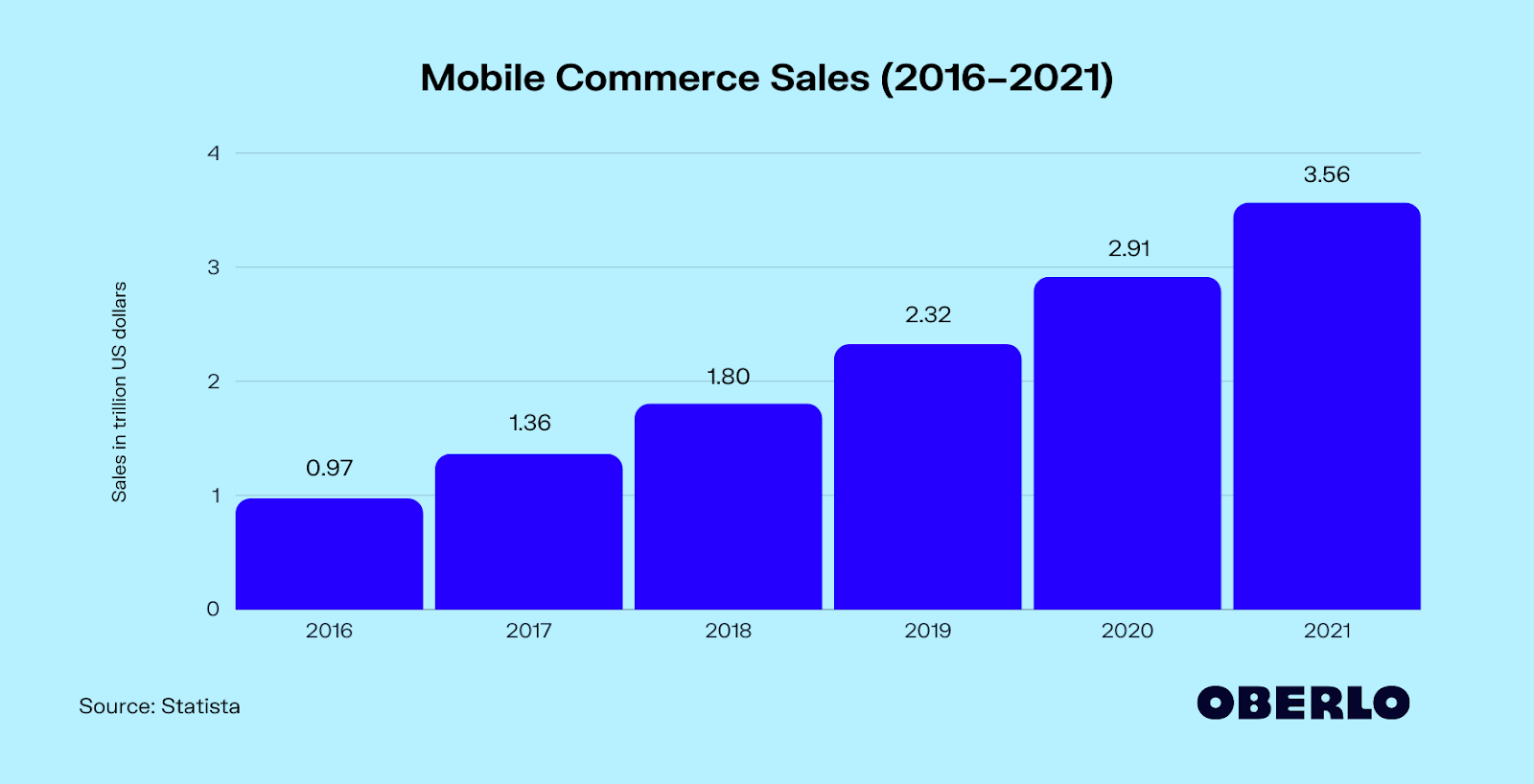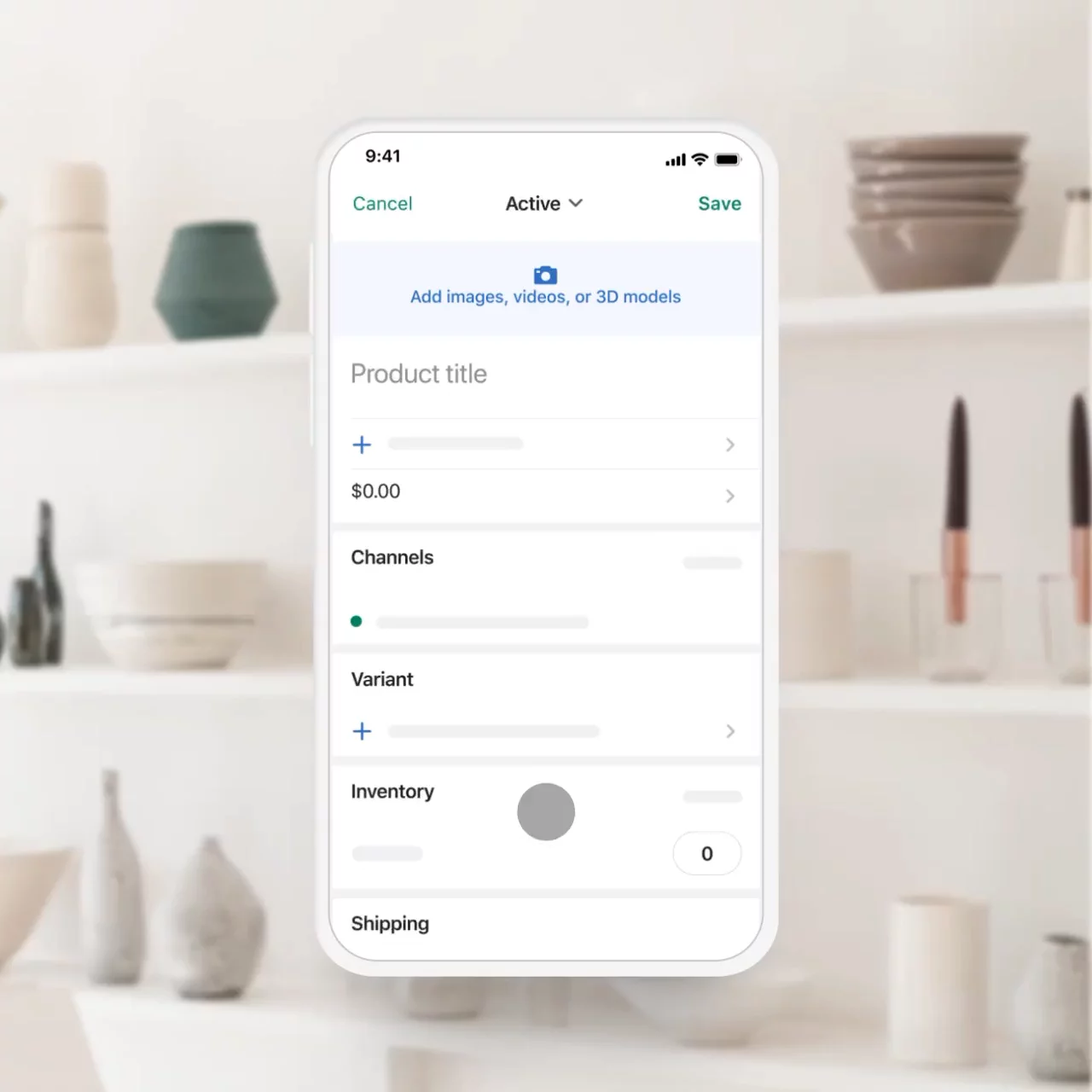The Internet is not only a large communicational network; it's a large marketplace with hundreds of thousands of trading points. Many mobile commerce apps realize this purpose.
As you'll see, design is a crucial feature of these apps. Imagine a typical physical market: it should be well-organized, with clear signs showing what is selling at each of its corners. Although large markets seem very chaotic, they still have a clear structure enabling buyers to find the sellers they need.
Mobile commerce app design is similar in many ways. As you'll see, it can be a good option for you. While you can think that there are plenty of virtual markets, from giants such as AliExpress to Shopify, you'll also see that the industry size will certainly leave you a lot of space here. So, let's start with the statistics!
A few statistics
According to the Shopify blog, the world mobile commerce market will be more than $620 billion by 2024.
If talking about the overall sales volumes, they are far exceeding trillions of dollars now, as you can see in the graphic below.
These impressive numbers have their reasons: mobile commerce is extremely beneficial for buyers and sellers. A vast majority of people in the world have smartphones, including those from developing countries. They increasingly understand how convenient it is to order products from home.
So, creating a mobile commerce app will improve business sales, increase its reach, and open new perspectives to connect with customers and ensure their loyalty. And if you are able to connect buyers and sellers efficiently and creatively, you'll have all chances to find your niche!
Design and user experience: Crucial elements
The task of mobile shopping apps is to facilitate sales. Your buyers will spend their money, and you'll profit from it. Your sellers will place their goods, form orders, and receive buyers' money.
So, any extra movement, tap, and click for both these categories will potentially decrease the number of your customers and the satisfaction of those who decided to stay with you yet. It means that your app should have as perfect usability as possible. Its interface, clearness, and support availability are basic things to consider during development.
See the example of a nice cloth e-commerce platform's UI/UX from Dribbble below.
A successful UX
Mobile e-commerce platform must ensure that both buyers and sellers will be able to find each other.
Let's go back to the physical market. Its "interface" includes its plan, which determines how buyers will navigate the market, and trade tents' design, which ensures that they will see what trading is and for which price.
And, of course, the comfort of sellers should be ensured too. As you'll see, a similar approach should be applied when designing a mobile commerce app, although the methods will be drastically different, of course.
See the instance of the Shopify mobile seller interface: it's easy to add products and the design is intuitive. It's a good example of how to create an admin page for your customers, which will sell their goods via the application.
There're plenty of methods to optimize sales and attract both buyers and sellers. Let's see several examples of well-known applications.
Examples
This market has a lot of old players, active from the early days of the Web, but along with them, we'll explore recent startups which managed to become highly successful. Various well-known companies, such as IKEA and Adidas, have well-developed mobile marketplaces for selling their goods. Of course, almost everyone knows Amazon and AliExpress as the leading international marketplaces.
But here, let's review four mobile e-commerce platforms, each of which provides unique opportunities for both buyers and sellers.
-
Shopify is one of the largest e-commerce platforms, operating since 2006, and probably the most well-known among them. While starting as a web application, it now has a fully operating mobile version. It provides a well-developed sales channel for a fair price, starting from $29/month.
-
NewStore was founded in 2015 and positions itself as a multichannel sales platform, integrating both online marketplaces and offline stores. It also uses AI extensively to analyze buyers' and sellers' data and provide personalized recommendations for them.
-
Odeko, created in 2019, provides a unique approach to connecting cafes and their customers, focusing on helping small coffee businesses to grow.
-
NTWRK, established in 2018, is another interesting experiment in this field, where sellers use videos to promote and sell their goods. See below what its interface looks like. It's very minimalistic, fully concentrating customers' attention on the product.
How to design your own?
Well, what do you need to develop a good mobile commerce app? Let's summarize essentials, according to the guide and these four applications.
- Registration and user profiles are crucial elements for customers to introduce themselves, their data, and payment methods.
- Catalog of everything which can be created and traded here.
- Search with a variety of filters, according to the catalog section.
- Shopping cart to review purchases.
- Checkout: an interface for secure and easy payments.
- Order tracking to understand where it is and when it will arrive.
- Feedback and support to always be sure that your problems will be heard and solved.
To see the full development plan, please check the guide, and we'll continue to explore current mobile commerce trends.
Mobile commerce design trends
Let's overview and summarize several existing trends in mobile commerce apps.
- Interactivity includes various features enabling helpful and convenient interaction with the app. Your app should not be overweighted by them, so the customer is not overloaded, but make sure to include essentials like a search box, price comparisons, and an instant purchase button.
- Personalization means that your app will have algorithms that optimize trading routes by analyzing buyers' and sellers' data. Based on analysis results, they'll provide your customers with products they need the most and can afford, improving their experience and increasing sales.
- Integration with other social platforms will improve the experience of your customers and enable them to report their purchases seamlessly, which they'll probably do.
- One-click purchase is quick, convenient, and ensures trust.
- Live streaming can be a good way to promote the product, as the NTWRK example shows. No wonder TikTok and Snapchat are heavily used for similar purposes, so why don't you integrate such a feature into your app? You can even consider advanced VR/AR features to enrich it, or plan to do this in the future, when AR devices will be widespread.
- Chatbots are useful for providing crucial information, finding anything if even filters cannot help, and can answer most routine customers' questions.
- Blockchain technologies are useful here, as a mobile commerce app is always connected with payments and should provide a large level of security --- and blockchain is all about security.
Conclusion
The mobile commerce area is growing, and there are so many methods to bring your buyers and sellers together. If you think about them, you'll probably find many creative ways of building these connections in your mobile commerce app.
Be sure, however, to test your idea first, as your users' convenience is the foremost point for your application. Lastly, review the current trends and essential features --- and be sure to implement them all!





